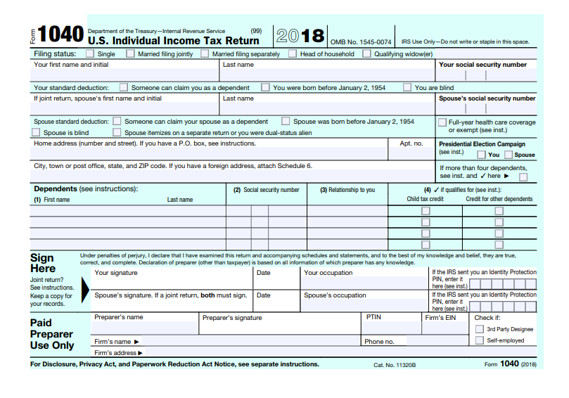We know it doesn’t sound like fun. But trust us. A little advance planning will almost always help you reduce the taxes you owe. Here are some maneuvers that are especially useful come year’s end.
Manipulate your income
The most basic form of year-end planning involves pushing tax bills into the future by deferring income into the next year and accelerating deductions into the current year. One example would be to postpone an IRA withdrawal, another would be to prepay your Jan. 1 home mortgage interest in December. Unfortunately, it isn’t quite that simple these days.
You must be aware of the “side effects” of any action that changes your adjusted gross income from one year to the next. Our example of postponing the IRA distribution would reduce your current AGI (good) but increase the next year’s figure (bad). For example, higher AGI can increase the taxable amount of Social Security benefits; reduce or eliminate your ability to make deductible IRA contributions and trim your write offs for medical expenses, casualty losses, and rental real estate losses. Higher AGI could also cut back or eliminate the tax credits for dependent children and college tuition, reduce or eliminate your ability to make a Roth IRA contribution, and so forth. The bottom line: Consider the effects of potential year-end tax moves on AGI and AGI-related tax breaks for both this year and next, and implement only those ideas that will put you ahead over the two-year period.
Make the most of year-end selling
If you have a few loser stocks that you wouldn’t mind unloading, now is the time. If you have them, you can sell enough dogs to wipe out all your capital gains for the year, plus another $3,000 ($1,500 for married filing separately) in regular income. Be careful to avoid a wash sale — buying the same security within 30 days before or after you dump loser shares. Tax rules disallow the loss.
If you have a net capital loss of over $3,000, consider selling enough winners to get back to that magic $3,000 number. Taking the gains will add zero to your tax bill. (However, remember our earlier advice and sell only shares you can kiss goodbye without regret.)
If you have both unrealized gains and losses in your portfolio, but want to make some sales, here is how to match them to best effect.
First, the obvious general rule is try to sell long-term winners (held over 12 months) first to benefit from the 15% or 20% long-term capital-gains rate. Then, unload your short-term holdings.
But which dogs do you sell to offset those gains? You will generally get the most tax-saving bang for the buck with a short- term loss. This is because short-term losses first go to offset short-term gains that would otherwise be taxed at your regular income-tax rate, which can be as high as 37%. Any leftovers then offset long-term (15% or 20%) gains.
Last but not least, remember you can further reduce taxes by telling your broker to sell your highest-cost shares when unloading part of your holdings in a stock. Using this “specific ID method” requires you to identify the shares to be sold by specifying their cost and purchase dates. You must also receive a written confirmation of your instructions from the broker or keep a record of your oral instructions. Put this in your tax file for safekeeping.
If you don’t follow this procedure, you must use the first-in, first-out (FIFO) method, meaning the shares you bought first are considered sold first. Those were likely the cheapest — giving you the biggest possible tax hit. The point to remember is that you must take action at the time of sale to use the specific ID method.
Time your mutual fund buys and sells
If you own appreciated mutual fund shares held over 12 months and are contemplating bailing out toward year’s end, sell before the December dividend. This way, your entire gain — including the amount attributable to the upcoming dividend — will qualify for the 15% or 20% rate. If you wait, part of your dividend will almost certainly consist of ordinary income. You’ll owe up to 37% on the ordinary part.
Alternatively, if you want to make a year-end purchase of mutual fund shares, wait until the distribution has been made. If you buy just before the ex-dividend date, you’ll get back part of the money you just invested and owe taxes on it. To avoid this outcome, call the fund. Ask for the ex-dividend date and the estimated payout. Then make your purchase after the magic date if the dividend is big enough to concern you. (Of course, the ex-dividend issue doesn’t apply to shares held in tax-exempt accounts like IRAs and qualified retirement plans.)
Retirement distribution planning
Also, retirement plan distributions (other than certain lump sums eligible for special treatment) will increase this year’s AGI, which can result in the negative side effects mentioned earlier.
IRA withdrawals can be taken to pay qualified higher education expenses for you, your spouse, or your child or grandchild without owing the 10% penalty. (You’ll still owe income tax.)
Penalty-free IRA withdrawals can also be taken to finance a first-time home purchase for you; your spouse; or a child, grandchild, or ancestor of either you or your spouse. There is a $10,000 lifetime limit on withdrawals for this purpose.
Plan ahead at your job
If you have a 401(k) plan at work, we suggest setting aside as much as you can stand, at least up to the 2019 deductible maximum of $19,000 ($25,000 if you will be age 50 or older at year-end). This advice goes double if your employer makes matching contributions, which amount to “free money.”
Near the end of the year is when employees must specify how much salary they will contribute to their medical and child-care flexible spending accounts (FSAs) for the following year. Tax-free withdrawals can then be taken from these accounts for uninsured medical and dental expenses and child-care costs.
By the way, if you leave a balance in your FSA at year’s end, you’ll lose the money (unless your company plan allows you to carry over an unused balance of up to $500 from your medical FSA to next year). So make sure you drain the account. For example, you can get new glasses and contacts, fill prescriptions a bit early, and have some long-deferred dental work taken care of.
Business or pleasure?
You may be able to claim tax losses from activities the IRS might consider hobbies. This includes things like breeding animals or restoring and selling antique cars, from which you have some revenue but perhaps not enough to be profitable every year. The tax rules allow you to say an activity is a for-profit business as long as it runs in the black at least three out of every five years (two out of seven for horse racing, breeding, showing or training). The beauty of this rule is that if you can turn your hobby into a business, at least for tax purposes, you can deduct losses in years when expenses exceed revenue. For hobbies that don’t qualify, by contrast, you can use expenses only to offset income, but you can’t deduct overall losses.
The trick is to time your revenue and expenses, so you eke out a profit three out of five years (or two out of seven for horses). Then you can claim big losses in the intervening years. If your activity is on the cusp of qualifying as a business, consider accelerating income into this year and deferring some deductible expenses into next year. Showing a current-year profit could set you up for a big deductible loss next year. Beware: The IRS can challenge your claimed business losses. But the onus is on the agency to prove that your activity is a long-term loser, and the expectation of future gains from selling your assets — horses, cars, whatever — can defuse the government’s arguments.
This story was updated on March 18, 2019.
Source : MTV












